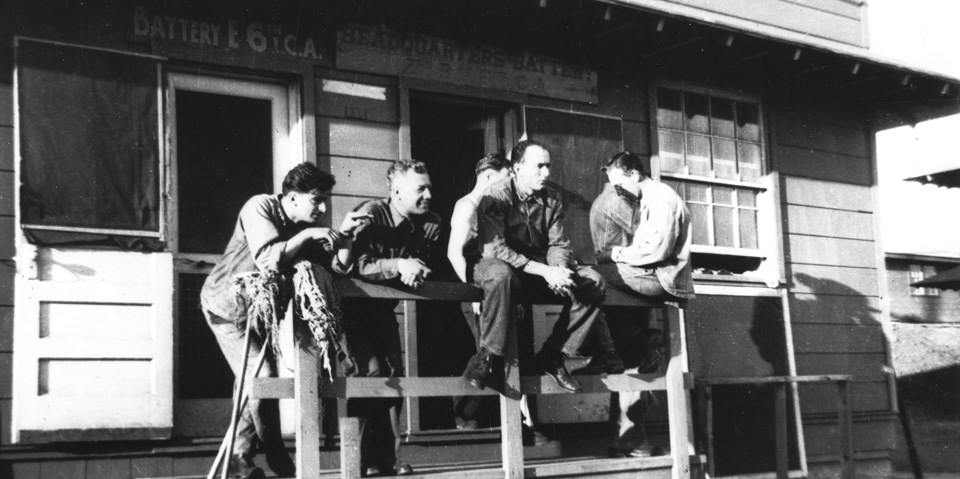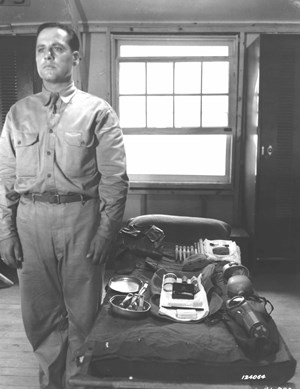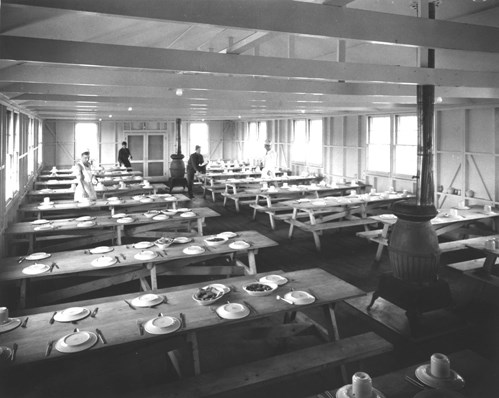
PARC, NPS
A Soldier's Life The first soldiers stationed at Fort Cronkhite were assigned to the 6th and 5th Coast Artillery Regiments. A soldier’s life at Fort Cronkhite, as anywhere in the army, meant that you did what you were told to do. A soldier’s daily life on post was structured and regimented; they were required to drill and train, eat and clean their barracks, all at tightly scheduled times. The soldiers trained constantly, either up at Battery Wallace or on the post’s main parade ground which was located in the large open space that is now a parking lot. Fort Cronkhite, like most World War II posts, provided the men with the bare necessities for military life. In addition to providing food and housing, the army also provided medical and dental care to the soldiers; there was even an on-post barber. 
Photo courtesy of National Archives, photo no 111-SC-124064 Feeding the Army Fort Cronkhite contained several mess halls, where the soldiers ate three meals a day. One cook was assigned to each grouping of three barracks, and soldiers on KP (Kitchen Patrol) duty, helped prepare the food. Army food was usually cheaply prepared and of inconsistent quality, but special menus were created for holidays. The 1941 Christmas Dinner menu for the Harbor Defenses of San Francisco included roast turkey with oyster dressing, candied sweet potatoes, spinach with hard-boiled eggs, mince and pumpkin pies, mixed nuts, coffee with fresh milk and cream (a refreshing break from powdered milk) and cigars and cigarettes for all. 
Photo courtesy of Fort Lewis Military Museum, Fort Lewis, WA 
Photo courtesy of National Archive, photo no 111-SC-133703 |
Last updated: August 2, 2016
Success
Thank you. Your feedback has been received.
Error
alert message

